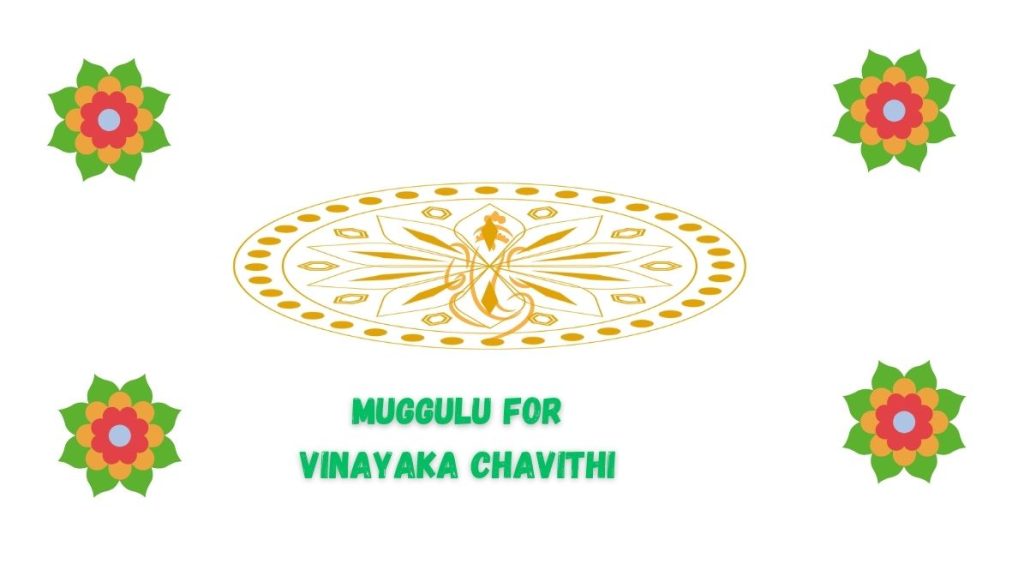Vinayaka Chavithi, a prominent Hindu festival celebrated to honor Lord Ganesha, is not just about devotion but also creativity. One traditional aspect of this celebration is the creation of intricate Muggulu, also known as Rangoli, at the entrance of homes and temples. In this blog, we will delve into the art and significance of Muggulu during Vinayaka Chavithi.
1. Muggulu for Vinayaka Chavithi
Muggulu, or Rangoli, is an ancient art form that has been an integral part of Indian culture for centuries. During Vinayaka Chavithi, it takes on a special role as devotees use this art to welcome Lord Ganesha into their homes.
2. Significance of Muggulu
Creating Muggulu during Vinayaka Chavithi serves multiple purposes:
- Invoking Lord Ganesha: The intricate patterns and designs are believed to invite the presence of Lord Ganesha, ensuring a harmonious and auspicious celebration.
- Marking the Path: Muggulu at the entrance of homes is like a symbolic pathway for Lord Ganesha to follow, signifying his arrival.
- Aesthetic Beauty: Muggulu adds a touch of aesthetic beauty to the surroundings, enhancing the festive atmosphere.
3. Varieties of Muggulu Designs for Vinayaka Chavithi
There are numerous Muggulu designs to choose from, and each design has its own charm and significance:
- Kolam Muggulu: These are geometrical patterns that are easy to create and often include dots and lines.
- Traditional Muggulu: These designs feature traditional motifs like lotus flowers, lamps, and mango leaves.
- Ganesha Rangoli: Some Muggulu designs incorporate the image of Lord Ganesha, serving as a direct representation of the deity.
4. The Creative Process of Making Muggulu
Creating Muggulu is an art form that requires skill and patience. It involves:
- Drawing the Outline: The design is first outlined using chalk or rice flour, with dots and lines forming the base.
- Filling with Colors: After the outline is complete, the spaces within the design are filled with vibrant colors using rice flour or flower petals.
- Intricate Details: Some Muggulu designs have intricate details that require a steady hand and an eye for symmetry.
5. Muggulu and Environmental Considerations
In recent times, there has been a growing awareness of the environmental impact of Muggulu. To address this concern, eco-friendly materials like natural colors and flower petals are being used instead of synthetic colors.
6. Preserving the Tradition
As society evolves, it’s important to preserve cultural traditions like Muggulu. Encouraging the younger generation to participate and learn this art form ensures its continuation.
Conclusion:
In conclusion, Muggulu for Vinayaka Chavithi is not just an art form but a way of expressing devotion and inviting the presence of Lord Ganesha into our homes. It combines creativity with spirituality, making it a cherished tradition during this auspicious festival.
Whether you opt for a traditional design, a Ganesha-themed Muggulu, or a contemporary eco-friendly approach, the act of creating Muggulu during Vinayaka Chavithi is a beautiful way to celebrate the beloved elephant-headed deity and add an artistic touch to the festivities.

